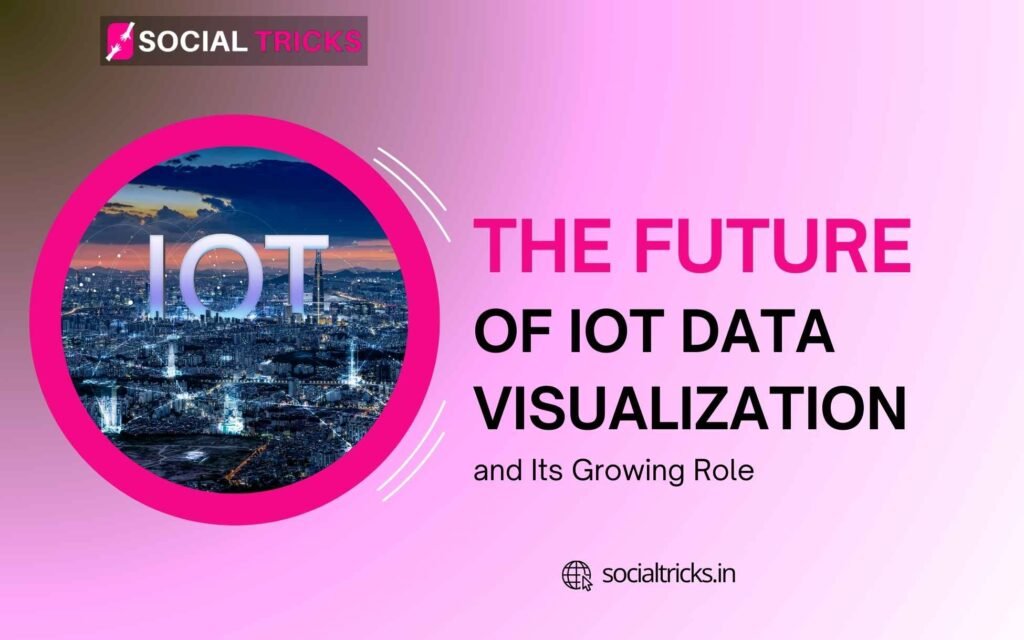Introduction
Internet of Things (IoT) is an avenue for transformation and has immensely shaped the way we exist. Ranging from intelligent residences to self-driven automobiles, IoT technology is instrumental in collecting streaming huge chunks of data. However, raw data is complex to read, and here comes data visualization to make allusions. It helps to grasp patterns, trends, and inferences from the data of the IoT.
What Is IoT?
IoT stands for Internet of Things, which are devices that are connected to the internet to be able to send and receive data. Some examples include the following:
- Smart home devices (Alexa, Google Home, smart lights)
- Wearable gadgets (smartwatches, fitness bands)
- Industrial machines (factory robots, smart sensors)
- Healthcare tools (heart rate monitors, glucose trackers)
It is estimated that the number of IoT devices in the world will be 29.4 billion by 2030 (Statista, 2023).
The Importance of Data Visualization for IoT
IoT devices produce enormous data, and meaningless is the only thing they are without any visualization for this sea of data. Below are the principal reasons:
- Fast decision-making − Companies and end-users can now understand the data in real time.
- Tracking trends − Indicates when a particular attribute rises over a certain period or has the highest value.
- Utilizing efficiency − Optimizing energy, cost, and performance.
- Protecting secure environment − Detecting any sort of malicious behavior or threat to cybersecurity.
Methods for Visualizing Data in IoT
IoT data could be displayed over a variety of visualization technologies:
- Dashboards: Show real-time charts and graphs of IoT data
- Heatmaps: Show the level of activity of different areas
- 3D-related location maps: Represent smart cities, smart factories, and buildings
- Graphs/Charts: Help in the quick comparison of different IoT metrics
- Maps: Show GPS and location-based IoT data
Use Cases for Real-World Application of IoT Data Visualization
1. Smart Homes
- Energy utilization graphs assist homeowners in reducing electricity bills.
- Smart thermostats adjust temperature concerning data patterns.
2. Healthcare Monitoring
- Heart rate graphs are used to diagnose any initial disease symptoms.
- Blood sugar levels are visualized for diabetes.
3. Smart Cities
- Traffic heatmaps can enable congestion reduction.
- Air quality charts track pollution levels in real life.
4. Industrial Automation
- Machine performance graphs help visualize the need for maintenance.
- Supply chain dashboards improve process efficiencies and decrease waste.
Growth in AI Applications in IoT Data Visualization
Artificial Intelligence (AI) is in a position to make IoT data visualization intelligent. AI tools will be able to:
- Detect abnormalities in IoT data
- Model trends via machine learning
- Handle reports automation meant for businesses and end-users
A good example of the future: AI in IoT could show a compound annual growth rate of 37.5 percent from 2023 to 2030 (Gartner, 2023).
Challenges Faced in IoT Data Visualization
1. Big Data Management
- Huge volumes of IoT data are hard to deal with.
- They require high-end cloud solutions and edge computing.
2. Security and Privacy Issues
- In general, there is a risk to hacking or misuse of IoT data.
- Stronger cybersecurity must be implemented.
3. Standardization Problems
- The different sets of IoT devices have different data formats.
- Universal standards are sort of needed to have a frictionless data exchange.
Future Trends in IoT Data Visualization
- Augmented Reality (AR) & Virtual Reality (VR) – IoT data will be visualized in 3D for AR/VR.
- Edge Computing – Data transfer time gets expectably reduced to speed up real-time analysis.
- Blockchain for IoT Security – It offers security to the Fullest for secure and tamper-proof IoT data.
- Voice-Based Data Interaction – Users can ask AI assistants to explain IoT data trends.
Conclusion
To reign in a New Age! Smarter decisions, greater efficiencies, and extremely vigilant security measures-due to poise, AI, AR, and Blockchain technologies-have others dawn over the IoT visualization horizon of the future. Assurance of interconnected future that would all depend now on clever manipulation of IoT data through these technologies in years to come for smart cities, healthcare, and industrialization.


